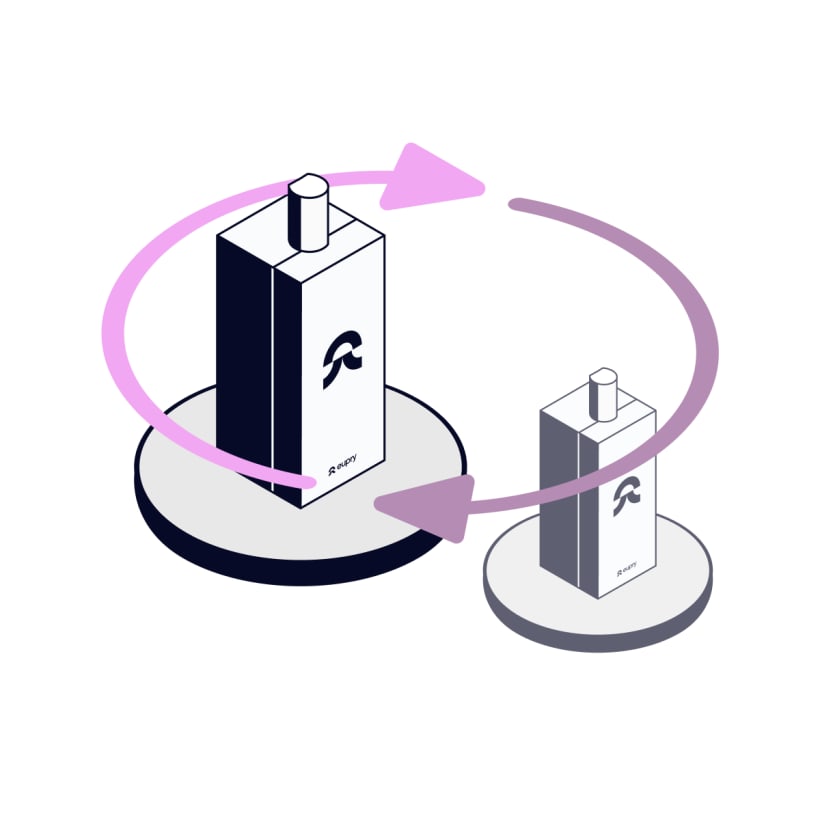
ISO 17025 in temperature compliance: What you need to know
Jakob Konradsen

Estimated reading time: 6 minutes
What is ISO 17025 accredited calibration, who performs it - and do you need it?
This article explains what ISO 17025 is, and what it means to be accredited in ISO 17025. Many will relate ISO 17025 to national accreditation bodies such as A2La, DAKKS, UKAS, COFRAC, DANAK, etc.
As an example, Eupry is accredited by the Danish accreditation body DANAK which is mutually recognized by the US body A2LA both part of ILAC / MRA.
What is ISO 17025?
ISO 17025 is a set of requirements for testing as well as for calibration laboratories that wish to show that their work complies with high technical and quality standards.
ISO 17025 builds on the quality standard ISO 9001 but with a set of technical requirements on top of the quality requirements.
If a company complies with (and is accredited to) the requirements of ISO 17025, you can have confidence in the calibrations that a laboratory performs. In many cases, an accredited calibration is required since it is more or less the only way you can tell that a calibration has been performed with high-quality standards.
Also read: Why is calibration of data loggers important?
How is ISO 17025 relevant to temperature compliance?
ISO 17025 underpins temperature compliance by providing a framework for laboratories to demonstrate technical competence and ensure the validity of their testing and calibration results, including temperature measurements used in monitoring, which is essential for maintaining product integrity and meeting regulatory requirements in temperature-sensitive sectors like pharmaceuticals, biotech, and food safety.
Eupry’s ISO 17025 accreditation
Eupry is accredited to the ISO17025:2017 standard by the Danish accreditation body DANAK for calibration, which means that Eupry has shown that we deliver high-quality calibrations, which live up to the rigorous external scrutiny of DANAK. This means that you as a customer can be sure that every accredited calibration that Eupry delivers, lives up to the requirements of ISO17025:2017.
Also read: 8 calibration components you should have ready for an audit of temperature compliance
How to upgrade from traceable calibrations to ISO 17025 accredited calibrations
It is very easy to upgrade to an accredited laboratory. With Eupry’s service model, all products can be upgraded from traceable calibrations to accredited calibrations, simply by contacting us.
Also read: What kind of temperature calibration should I choose?
What is the advantage of ISO 17025 accredited calibrations?
The advantage of choosing an accredited calibration over a traceable calibration is that an accredited calibration is the highest possible standard.
Through the external audits that an accredited laboratory has to go through, an independent third party has ensured that the calibrations live up to the high-quality standards that the ISO17025 requires.
This in part means that an independent third party has ensured that a laboratory complies with high quality standards, and therefore it is not necessary to argue with external parties whether the performed calibrations are of high enough quality.
Who performs accredited ISO 17025 calibrations?
Through the accredited ISO17025 bodies such as A2LA, DAKKS, COFRAC, UKAS etc. it is possible to locate companies that are able to perform accredited calibrations. Use the selector on this page to find the bodies.
What is the difference between accreditation bodies such as NIST, UKAS, DAKKS, COFRAC, and DANAK?
Each country has its own accreditation body or bodies, which accredit laboratories in each country to among other the ISO standard of calibration and testing. Through the international organisation for accreditation bodies ILAC, each body is peer reviewed through ILAC, and thus recognized by the other members of ILAC.
This means that although a calibration certificate is issued by a laboratory accredited by a different accreditation body than the one operating in a company’s country, it is just as valid as a certificate that has been issued by an accreditation body in the company’s home country.
Can I use an accredited ISO 17025 calibration from another country?
Generally, an accredited calibration from another country can be accepted as much as a calibration from a company or organization’s home country. Through the international organization ILAC, most countries have signed the ILAC MRA (Mutual Recognition Agreement), which means that all the signatories of the ILAC MRA have agreed to recognize calibrations performed by accredited laboratories, which aids in assisting international trade and development throughout the world.
Although some countries have specific requirements or standards that go beyond the requirements in either the ISO 17025 or other, for the vast majority, the requirements within calibration that an accreditation body audit a company to, are to such a high standard of quality that any local requirements are fulfilled.

Calibration done in minutes - and all in one go
With automated temperature compliance and patent-pending calibration technology, data logger calibration can be done quickly and all at once.
How to use an ISO17025 accredited calibration from another country
When a company wishes to use a calibration certificate from a laboratory that has been accredited by an accreditation body other than the one in the company’s home country, it should refer to the ILAC MRA. If the company resides in a country that is a signatory of the ILAC MRA, the calibration certificate of that laboratory should be accepted on equal terms as if the calibration had been performed in the home country of the company or organizations.
If in doubt, the full list of ILAC MRA signatories can be found here: https://ilac.org/signatory-search/
How do I identify an ISO 17025 accredited calibration certificate?
There are several requirements for an ISO17025-accredited calibration certificate, and here a few of the most important requirements:
- Name and address of the laboratory that has performed the calibration. It is important to confirm that the calibration was performed at an accredited laboratory and that it can be traced who performed the calibration.
- A unique calibration identification. Helps to ensure that the calibration can be traced and that all data gathered during the calibration can be retrieved in case of any questions or subsequent analysis.
- Identification of calibrated device. This is important, as otherwise the certificate can not be verified as a certificate of calibration for a specific device.
- Date of calibration. The date the calibration was performed, is used to identify when the calibration is no longer valid, which is determined by governmental or internal quality requirements.
- Calibration results. The most important part of the calibration certificate, is the results that were obtained. This should include the reference measurements, the measurements from the device during the calibration and the deviations. Other results might be compliance with a stated MPE (Max Permissible Error) or desired calibration points.
- Calibration uncertainty. The uncertainty associated with a calibration tells a user how precisely the obtained results were to the best guess of the real value. In other terms, the uncertainty gives a number of how precise the calibration was performed. This should always be followed by a statement of the K-value, which should be equal to 2 for all accredited calibrations.
How to perform an accredited calibration
- You are only able to perform an accredited calibration if you have been accredited by one of the ILAC MLA authorized bodies. However, it’s possible to perform a calibration by using a reference that has been calibrated by an accredited calibration laboratory. Have a look here on how to perform a traceable calibration of temperatures.
- In order to perform a traceable calibration read this following guideline.
ISO 17025 accreditation
Companies that perform calibration in accordance with ISO17025 can choose to be accredited to the standard, which means that a national accreditation body ensures that all requirements in the ISO17025 are being followed, and that the laboratory has committed to continuously follow the standard and improve their work.
Even though there are national accreditation bodies, most of the world’s accreditation bodies participate in a mutual recognition agreement (MRA), which means that an accreditation in one country can be recognized in another country.
What are the ISO 17025 requirements?
Within the ISO 17025 standard there are several requirements to the laboratories performing a calibration.
One of the key components is the expression of measurement uncertainty, which expresses how precisely a laboratory can perform a certain calibration. This is scrutinized by the accreditation body, and a customer of an accredited laboratory can therefore be confident that the uncertainty expressed on a calibration certificate is accurate and in accordance with high standards of quality.
Other key requirements are the pursuit to keep improving the quality of work, the requirement to inform customers of any deviations from agreed terms and results, and to only follow validated and tested calibration methods.
FAQ about ISO 17025
Frequently asked questions about the ISO 17025 accreditation.
